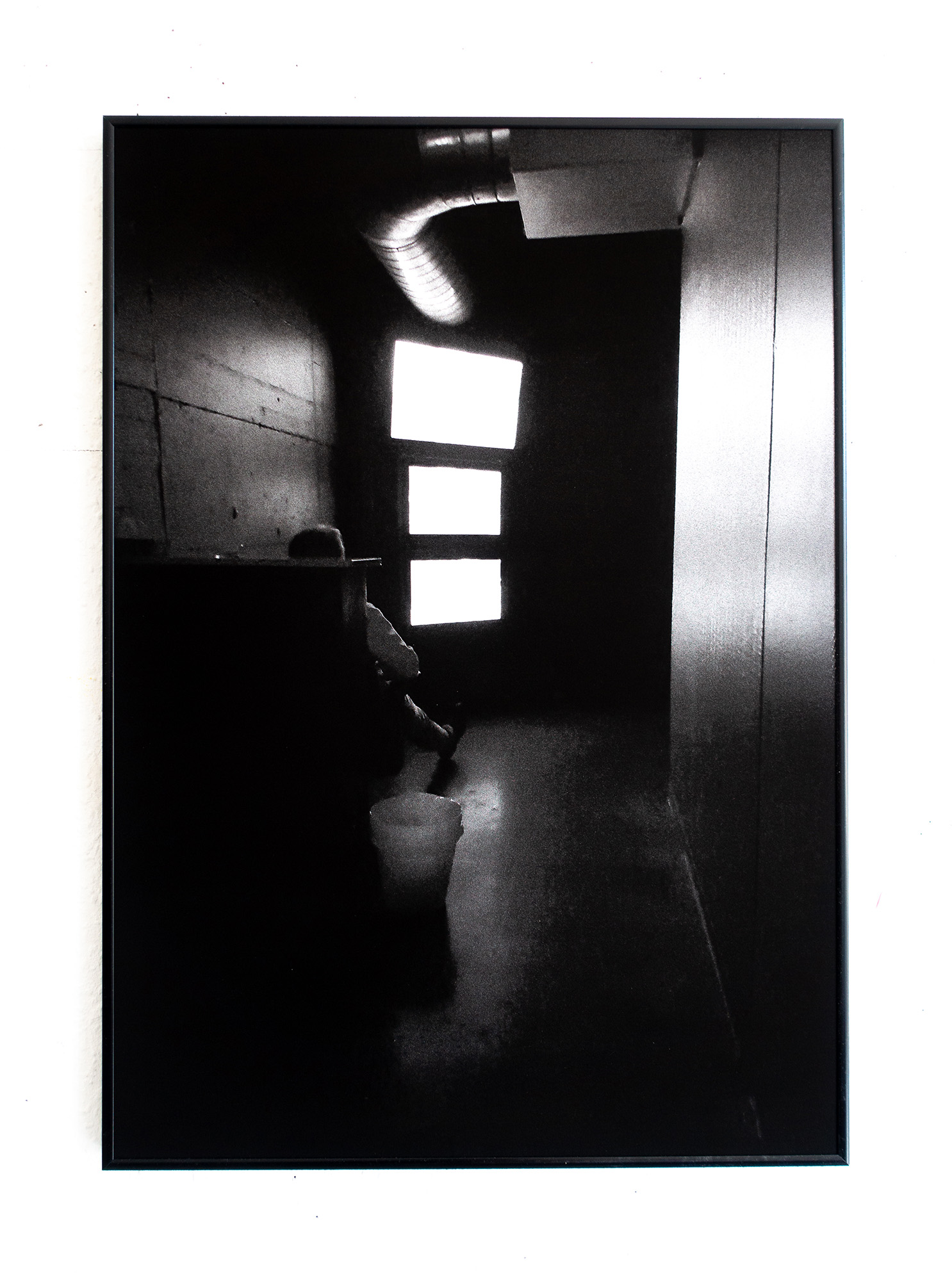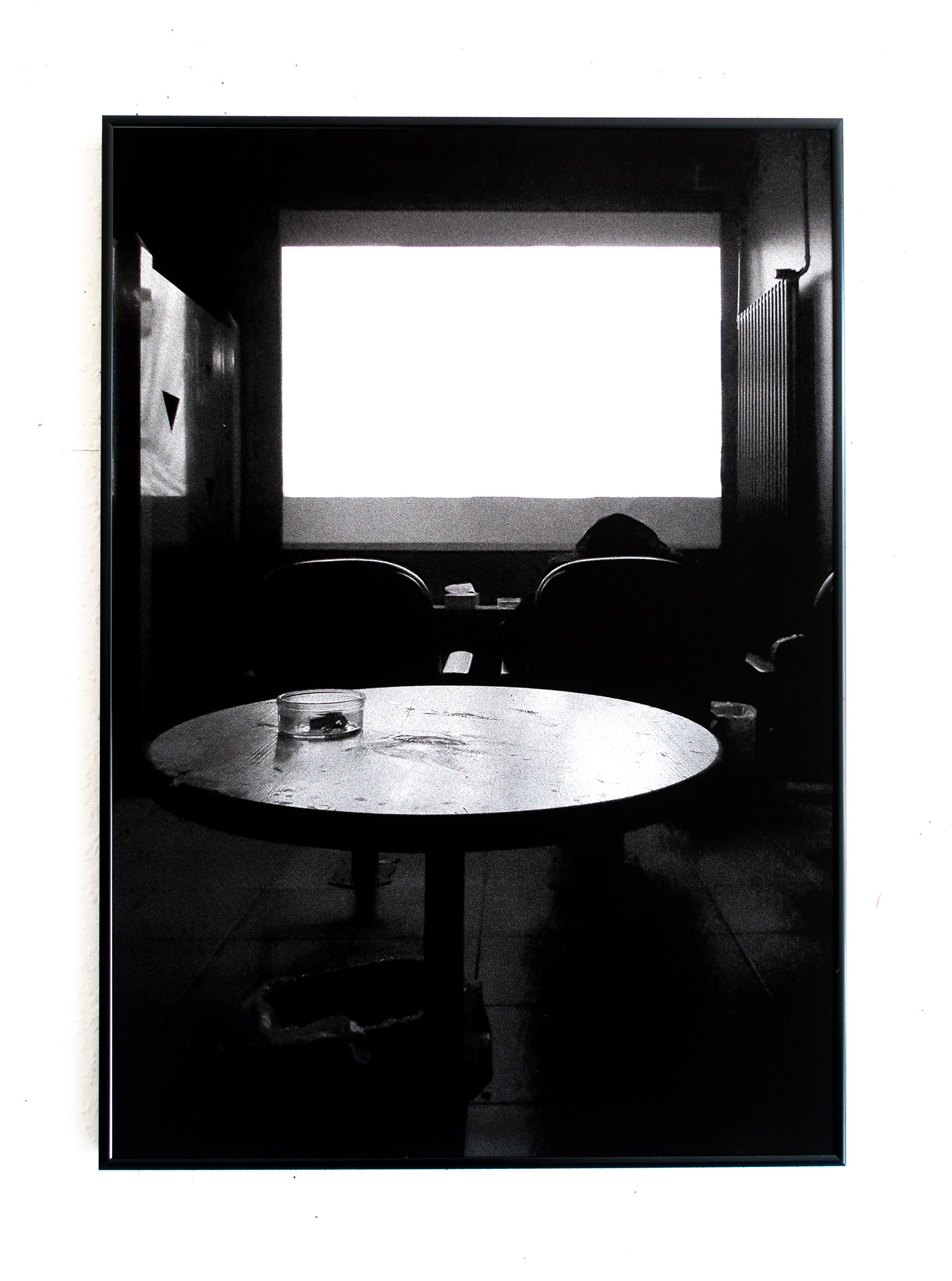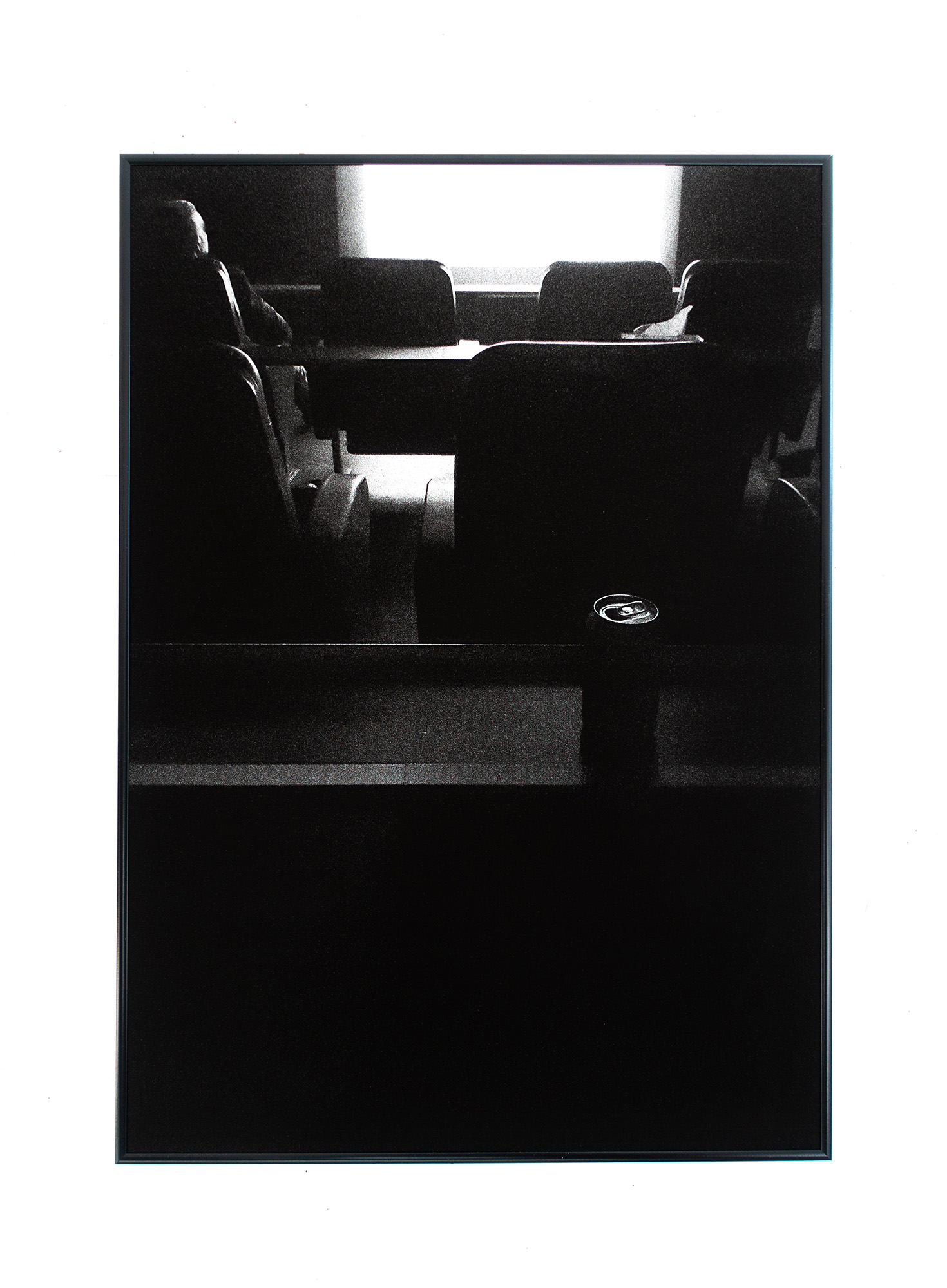The art of being alone: watching porn with Dean
Sameshima
Taking his camera to the darkness of Berlin’s pornographic cinemas,
artist Dean Sameshima considers the presence of customers who sit in both
privacy & public. Looking past the silhouette of the lone figures watching
the films, Will Jennings focuses on the tiny details around the room.
The recent Hiroshi Sugimoto exhibition at London’s Hayward
Gallery filled a whole room with the artist’s long-exposure Theatre series of large-format, richly printed photographs. Grand historic cinemas from
various locations photographed for the duration of a movie, the screen burning
out into whiteness and the rest of the movie theatre gently illuminated over
the course of the film. That exhibition has finished, but if you missed it, you
now have the opportunity to catch something with a poetic connection in the
same city – but something a little seedier.
being alone, a solo exhibition from Dean Sameshima at Soft Opening gallery, is similarly a study of cinema spaces where the screen is washed into whiteness through a long-exposure, but that’s where the similarity ends. Sameshima’s photographs are taken in a Berlin porn cinema and the durational draining of the projected film’s content not only offers a sharp white rectangle as a repeating motif across the 25 photographs but keeps the anonymity of the actors and their actions.
![]()
![]()
![]()
Also anonymous are the patrons of the cinema. We see them only from behind, haircuts and shoulders silhouetted against the film we can’t see, but which they very much can in the small, intimate cinema. The spaces do not have the grandeur and scale of Sugimoto’s carefully selected cinemas, but there is still an intriguing architecture in the detail, albeit somewhat less salubrious.
In the speckled grain of Sameshima’s black and white prints ventilation ducts, ceiling tiles, chipped tables, wipe-clean flooring, and fixed-in-place seating can be made out. There are people in there too, but as the title of the exhibition suggests, the individuals tend to be sitting alone. In one photo it looks as if there are two people next to one another, but it is hard to make out for sure in the dusky light and in fact might only be a man next to a pile of bag, coat, and belongings. In the darkness, reality can become something else.
For the most part, these people are alone, and yet they chose not to be at home watching films which they could easily watch on their own laptop for free from countless well-known websites. They chose to be in a place in public, but alone. Of course, they are only physically alone, there is a presumed sense of companionship through what they are watching, even if a fantastical companionship, but looking into Sameshima’s photos we will never know who they or their fantasy companions are.
![]()
![]()
![]()
![]()
In the darkness there are other details of place that instead become the focus of attention. Boxes of tissues, an ashtray with stubbed out butt in it, a curled sign on the wall, what could be a pair of spectacles sat on a table, a messy patch repair to a ceiling, a dark edge to the bolted foot of a side table where cleaners didn’t quite reach, a (Freudian) drink bottle vertically interrupting our view of the screen.
A smaller edit of Sameshima’s project is currently included in Foreigners Everywhere, the main Giardini exhibition of Venice Biennale, curated by Adriano Pedrosa. Pedrosa’s show considers the foreigner not just as a national construct, but anybody who is outside of the mainstream through race, gender, sexuality, and more. The Biennale wall text reads that being there “demonstrates the nuances of cruising and the ongoing act of looking,” and the figures we see silhouetted are in a meaningful way foreign to one another and our distant gaze, but they are each also desirous of a sense of companionship and closeness. In the cinema’s shadows there is insight despite anonymity, with much unspoken hope in the white glow.
![]()
being alone, a solo exhibition from Dean Sameshima at Soft Opening gallery, is similarly a study of cinema spaces where the screen is washed into whiteness through a long-exposure, but that’s where the similarity ends. Sameshima’s photographs are taken in a Berlin porn cinema and the durational draining of the projected film’s content not only offers a sharp white rectangle as a repeating motif across the 25 photographs but keeps the anonymity of the actors and their actions.



figs.i-iii
Also anonymous are the patrons of the cinema. We see them only from behind, haircuts and shoulders silhouetted against the film we can’t see, but which they very much can in the small, intimate cinema. The spaces do not have the grandeur and scale of Sugimoto’s carefully selected cinemas, but there is still an intriguing architecture in the detail, albeit somewhat less salubrious.
In the speckled grain of Sameshima’s black and white prints ventilation ducts, ceiling tiles, chipped tables, wipe-clean flooring, and fixed-in-place seating can be made out. There are people in there too, but as the title of the exhibition suggests, the individuals tend to be sitting alone. In one photo it looks as if there are two people next to one another, but it is hard to make out for sure in the dusky light and in fact might only be a man next to a pile of bag, coat, and belongings. In the darkness, reality can become something else.
For the most part, these people are alone, and yet they chose not to be at home watching films which they could easily watch on their own laptop for free from countless well-known websites. They chose to be in a place in public, but alone. Of course, they are only physically alone, there is a presumed sense of companionship through what they are watching, even if a fantastical companionship, but looking into Sameshima’s photos we will never know who they or their fantasy companions are.




figs.iv-vii
In the darkness there are other details of place that instead become the focus of attention. Boxes of tissues, an ashtray with stubbed out butt in it, a curled sign on the wall, what could be a pair of spectacles sat on a table, a messy patch repair to a ceiling, a dark edge to the bolted foot of a side table where cleaners didn’t quite reach, a (Freudian) drink bottle vertically interrupting our view of the screen.
A smaller edit of Sameshima’s project is currently included in Foreigners Everywhere, the main Giardini exhibition of Venice Biennale, curated by Adriano Pedrosa. Pedrosa’s show considers the foreigner not just as a national construct, but anybody who is outside of the mainstream through race, gender, sexuality, and more. The Biennale wall text reads that being there “demonstrates the nuances of cruising and the ongoing act of looking,” and the figures we see silhouetted are in a meaningful way foreign to one another and our distant gaze, but they are each also desirous of a sense of companionship and closeness. In the cinema’s shadows there is insight despite anonymity, with much unspoken hope in the white glow.



